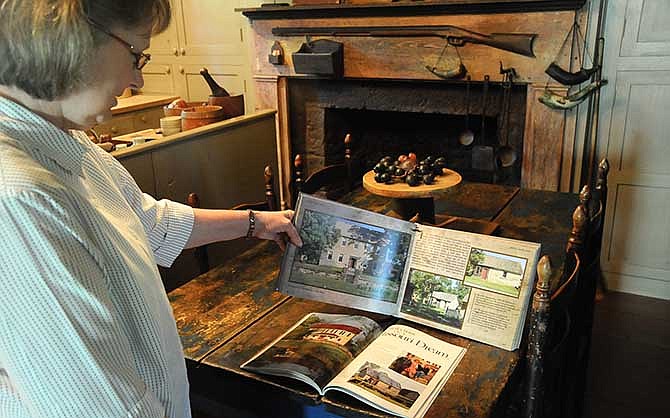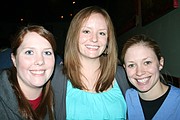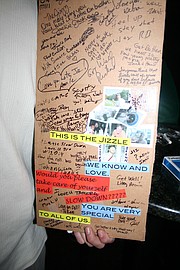RUSSELLVILLE, Mo. - It's not uncommon for vehicles to drive slowly by Rock Enon Farm on Route V. Sometimes, drivers will get out and take photos of the ageless stone fence framing the three-story house and outbuildings to match.
Carolyn Green had the same reaction the first time she saw her home 34 years ago. She and her husband, Rich, had completed two historic restorations before returning to Mid-Missouri, where they had built a new home in Jefferson City to look centuries older inside.
Rock Enon was the perfect place.
Such artisan stonework may be found more commonly east of Hermann. So, to find not only the country federal-style home but its outbuildings in original condition in rural Russellville was a real surprise.
"It's not a building style typical for this area," Green said.
Rock Enon's builder was Louis Bruce, who moved from Virginia with his wife and eight children in 1858. In that decade, other immigrants like the Bruces helped double the size of Missouri's population, as well as its acres being farmed.
"They settled here because of the natural springs," Green said.
The pond, separated from the home lot when Route V was improved in the 1920s, is spring fed year-round.
The Bruce family likely built all six buildings by 1872 and owned 400 acres around them.
"Their intention was to have a winery; but they changed their mind and built a granary to raise horses," Green said.
Remnants of the first structure - a modest log cabin - were found where the Greens' flag pole is today.
Markings tell that the barn was completed in 1870, the spring house in 1871 and the large house in 1872.
The original, brick outhouse with walnut seats and plaster walls has two adult holes and a child-sized hole.
"It was a pretty nice outhouse at the time," she said.
The combined summer kitchen, wood storage and smokehouse still stands behind the home. And the barn and granary are on the other side of the county road.
"We bought the house because it was an early stone house," Green said. "If you liked what I like, this would be the epitome."
Having sat closed up and often unlived in for several decades, the home needed a little TLC to fulfill its potential.
The Greens gutted the home's inside, allowing them to add modern plumbing, wiring and insulation. But modern wall and floor coverings were replaced with those matching the 1880s time period. The Victorian-style add-on porch was removed, and the tuck pointing and roofs were updated.
"There's nothing fru-fru; that's what I like," she said.
The 20th-century Rock Enon Farm was featured in Better Homes and Gardens' Country Home magazine in 1988 and in The Settlement Book by Simple Life Magazine in 2011. It was listed on the National Register of Historic Places in 1991.
"It was a new re-creation in an old shell with an old look," she said. "We feel like we've helped the house."
As for the name, it sums up the place. An early resident to the area recalled Aenon from John 3:23 as a place with much water, Deb Sheals' register nomination said.
The first church in the area also took the name Enon in 1847. When they built a church building in 1878 next door, Bruce donated similar limestone blocks from a nearby quarry. Today's Enon Baptist Church was formed from that first church.
Bruce set up each of his six children who survived to adulthood with land. And in 1880, the home passed to a son, too. The Bruce family is buried in a small, fenced cemetery nearby.
The home had few owners between the Bruces and the Greens.
The present owners bought the home from the late Jasper Hunter, who inherited it in the 1950s from his parents, who bought it about 1915.
"People have come into the house, who wouldn't have it - it's too big or too old.
"For Rich and I, it's our dream house."



